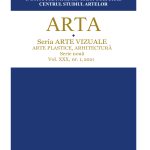Dominante arhitecturale ale oraşului Chişinău edificate în primii ani după cel de-al Doilea Război Mondial
Architectural dominants of the city of Chisinau built in the first years after the Second World War
Author(s): Alina Ostapov, Irina STUDZINSKISubject(s): Cultural history, Architecture, Social history, WW II and following years (1940 - 1949)
Published by: Institutul Patrimoniului Cultural al Academiei de Științe a Moldovei
Keywords: MSSR; architecture; dominant; architects; Chisinau; boulevard; politics;
Summary/Abstract: The first years after the Second World War are characterized by the reconstruction of the cities of the Moldovan Soviet Socialist Republic (MSSR). The development of post-war architecture was dependent on political authorities. The regulations in the field led to special urban transformations. The Soviet urban image is a recognizable one, especially in the development of the main arteries, defined by spatial and volumetric greatness. Another impressive thing is the architecture of Stephen the Great boulevard, whose aesthetics promotes Soviet ideology. It had particular regulations regarding the alignment of the buildings, their height, their proportions, the aesthetics of the facades facing the boulevard, the relationship with the neighboring buildings and others, forming a coherent configuration. The established rules ordered the street front; the buildings often formed “parade courts”, increasing the visibility of the massive facades, called “parade facades”, which became recognizable by decorative exuberance. This article aims at observing the development of the constructions on a certain segment of the main artery of the capital of MSSR - one of the priority preoccupations of the authorities in the given period.The first years after the Second World War are characterized by the reconstruction of the cities of the Moldovan Soviet Socialist Republic (MSSR). The development of post-war architecture was dependent on political authorities. The regulations in the field led to special urban transformations. The Soviet urban image is a recognizable one, especially in the development of the main arteries, defined by spatial and volumetric greatness. Another impressive thing is the architecture of Stephen the Great boulevard, whose aesthetics promotes Soviet ideology. It had particular regulations regarding the alignment of the buildings, their height, their proportions, the aesthetics of the facades facing the boulevard, the relationship with the neighboring buildings and others, forming a coherent configuration. The established rules ordered the street front; the buildings often formed “parade courts”, increasing the visibility of the massive facades, called “parade facades”, which became recognizable by decorative exuberance. This article aims at observing the development of the constructions on a certain segment of the main artery of the capital of MSSR - one of the priority preoccupations of the authorities in the given period.
Journal: Revista ARTA
- Issue Year: 30/2021
- Issue No: 1
- Page Range: 69-79
- Page Count: 11
- Language: Romanian

